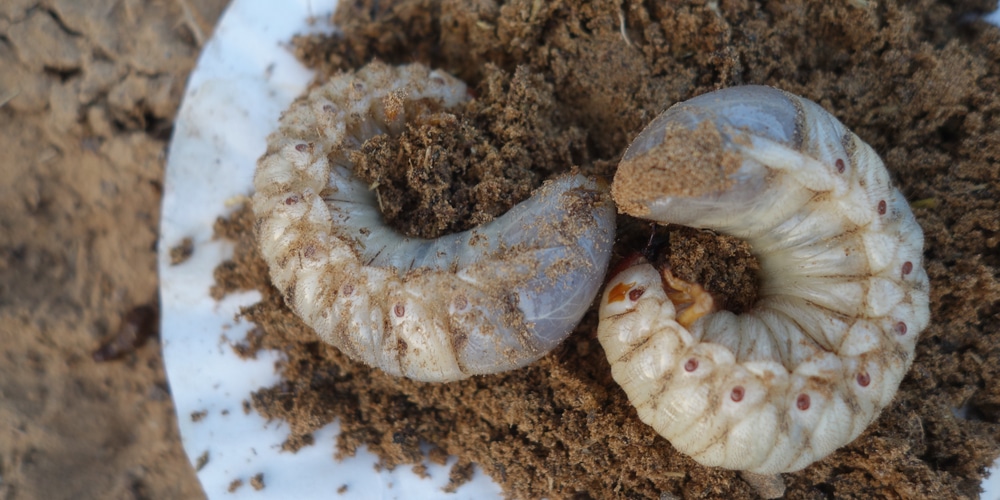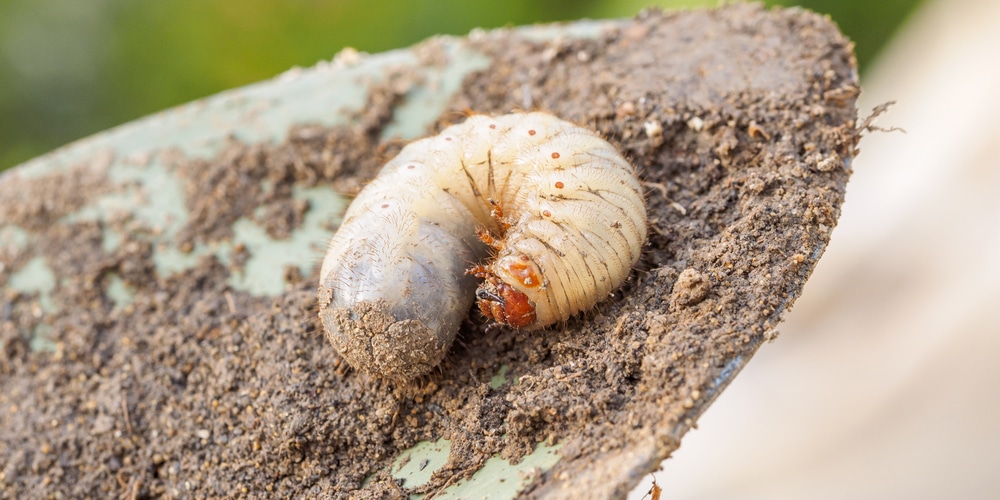If you like spending time in your garden (and maintaining healthy plants), you probably already know that taking care of your yard can be time-consuming.
Indeed, your efforts shouldn’t stop at ensuring your plants get enough moisture and nutrients. Instead, you’ll also have to watch out for pests and remove them.

Of course, the same applies if you are trying to keep a healthy lawn. For this reason, you should learn about which bugs might cause damage to your plants and grass.
You might encounter an annoying pest while growing your turf: the leather jacket grub. But what is it, and how do your get rid of it? You can find answers to these questions in this essential guide! Keep reading if you want to learn everything you need to know about leather jacket grubs.
What Are Leather Jacket Grubs?
Leather Jacket Grubs are the larvae of the crane fly (also known as Daddy Long Legs). If you are unfamiliar with these bugs, they are the ugly-mosquito-like insects that usually fly around lights in late summer.
They will lay legs at the end of the summer, out of which leather jacket grubs will come after a couple of weeks. So, leather jacket grubs aren’t insects. Instead, they are the pests at their larval stage.
But they can be equally harmful as an adult bug. Indeed, these larvae like to feed on grass plants’ roots, which can cause severe damage to your lawn.
You can expect leather jacket grubs not to harm your yard until late spring or early summer when they start moving up and down your turf leaves. Because of their light sensitivity, they usually come from the soil only at night. However, you may also see them on cloudy days.
How Do You Know Your Turf Is Suffering From A Leather Jacket Grubs’ Attack?
Besides looking for their presence, you can tell your grass needs some help if you notice the following symptoms:
- Yellowing of the leaves
- Dry patches where you can pull the roots and see little or no root growth
- Uneven Growth
These symptoms might also signal a lack of water or other diseases. However, if you see greyish or brown larvae, you should not doubt taking measures against leather jacket grubs. We recommend you control them at their larval stages. After all, eliminating them when they turn into flies will be much more challenging.
How Do You Get Rid of Leather Jacket Grubs from Your Garden?
Removing leather jacket grubs from your yard depends on your local climate and fauna. Indeed, crows, magpies, or robins love feeding on these bugs. However, that might cause other issues to your garden. So, removing them from your lawn is always the best strategy.
While we always recommend using chemical pesticides last, we understand that sometimes, it might be necessary. Assess the severity of the infestation and select a proper containment measure.
For instance, if you feel there is no need for chemical control, consider introducing beneficial insects that will naturally eliminate leather jacket grubs from your lawn. One of the best species is the beneficial nematode Stainememe feltiae. You can find it at most garden centers. Alternatively, you’ll have no problems ordering some online! But if you visit your favorite gardening store, don’t forget to ask professionals about the preferred method. You can also use them as a preventive measure. Release them in the fall to minimize the risk of dealing with leather jacket grubs the following spring.
Additionally, you can try removing the grubs by hand. All you have to do is water your lawn and cover the area with black plastic. Remove it in the morning (but do so slowly and carefully): you’ll see plenty of grubs attached to it. While this method might not be for everyone (after all, it requires you to remove the bugs manually), it is an effective way to remove most larvae manually. You can repeat the process after a couple of weeks to increase the effectiveness.
Finally, if you feel the infestation is severe, you might have to apply chemical products to eliminate leather jacket grubs from your lawn. Look for suitable products at your local garden store or consider contacting a professional service.
